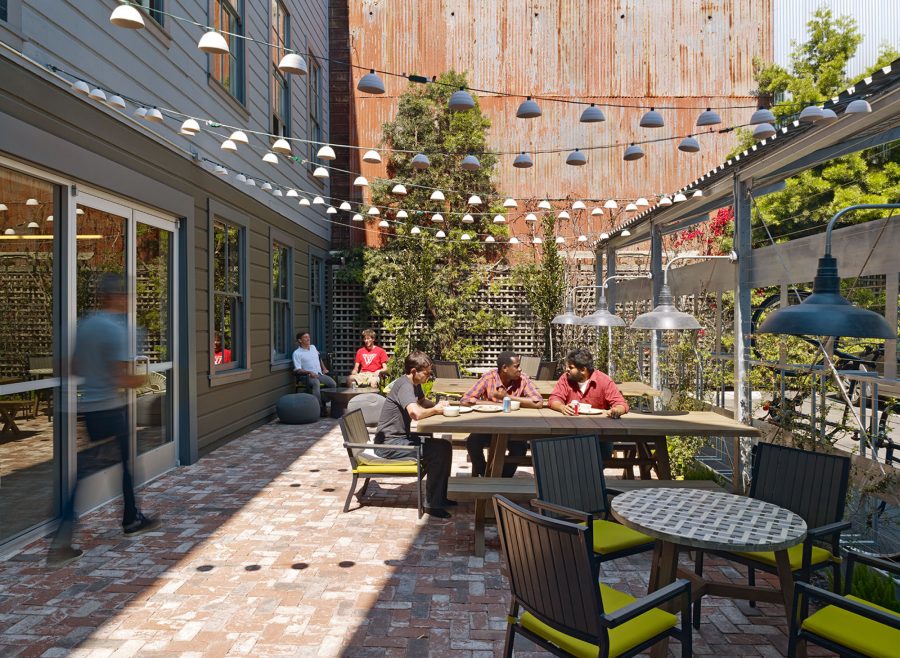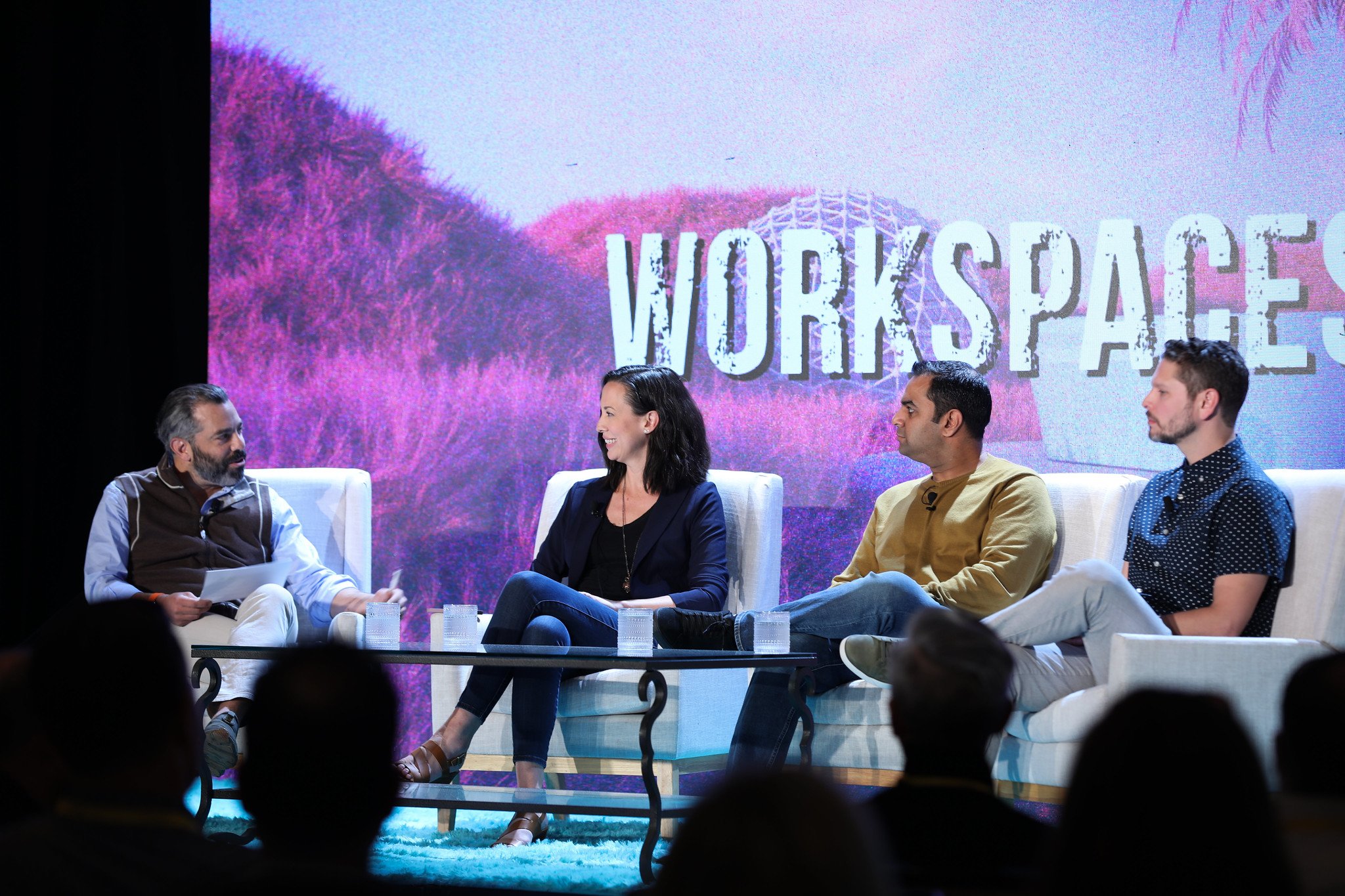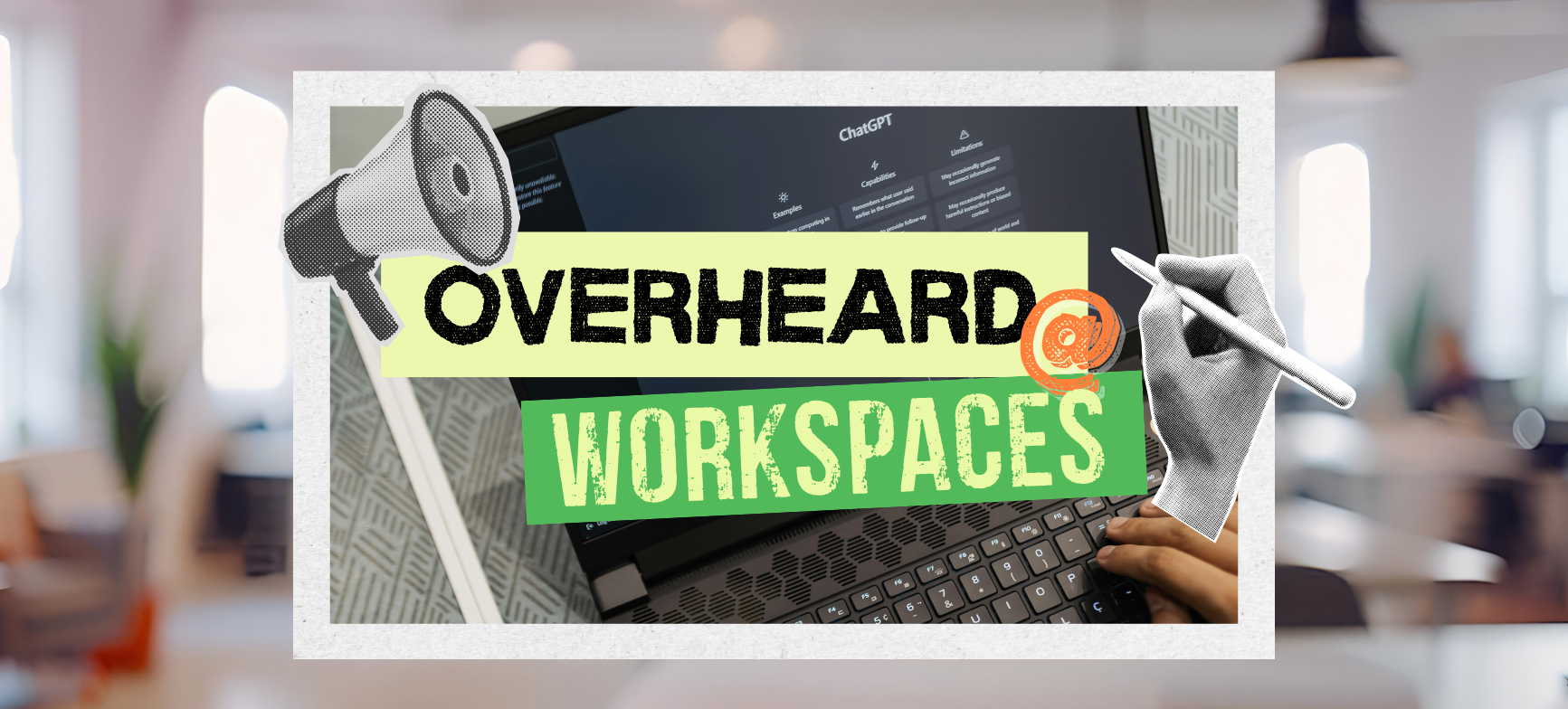As the fundamental nature of work evolves, so does the relationship between corporate real estate and human resources. In recent years, corporate real estate (CRE) and HR leaders have increasingly found themselves working towards the same goal: creating workplaces that unlock the full potential of the people in them.
In one sense, their mission is to transform the office into something employees want to commute to. In another, their task is to build a thriving culture that unites the entire company, no matter where its employees are. As a panel of CRE and HR professionals discussed at WorkSpaces, these challenges require collaboration, creativity, and more than a little patience.
Moderated by David Rotbard, the conversation included Jonathan Haugh, Head of Global Real Estate at Stripe; Q Hamirani, Chief People Officer at Paper; and Sara Escobar, Global Head of Real Estate & Workplace at Riot Games.
Who Does Workplace Report To?
Something that highlights the evolving nature of CRE and workplace roles is the department they fall under these days — something Rotbard explored with the panelists early on in the discussion.
“Let’s be honest — most organizations have struggled with where workplace fits,” Escobar said. “And our roles have changed dramatically in the last three years or so.”
At Riot, Escobar reports to the Chief Operating Officer. In a previous role at another company, she was placed under the Chief People Officer, where workplace was seen “as one of the elements that serves the employee experience.”
At the fully-remote Paper, workplace is a function of the COO, however, in Hamirani’s previous role at Airbnb, “workplace was always under the people team.”
“No matter where it sits, you have to have a unified ‘want’ to amplify the employee experience and that can come across with strong leadership,” Hamirani said, adding “Sometimes it can index one way or the other. If you’re under the CFO and they’re looking at it through a cost lens, for example, because that’s their domain.”
During his six years at Stripe, Haugh has reported to several different areas of the business. "It’s been a bit of a journey,” he said, explaining that the shifts took place according to the company’s needs as it grew from 700 employees to ten times that in four years.
Today, Haugh said, “It’s not about hitting utilization or hitting a certain number of people coming on every single day. It’s so much more about fostering connectivity, driving employee experience — those are main goals and KPIs.”
The Importance of In-Person
One of the great challenges of the hybrid era is nurturing a strong culture in a partially or fully distributed workforce. Diving into their own culture-building strategies, the panelists agreed that in-person activities are key.
“Remote work is great, and I'm a big advocate for it, but you do need those in-person moments of connection to recharge your barometer,” Hamirani said.
At Paper, his team accomplishes this by hosting off-sites in its offices, which are intentionally designed to instill a deep sense of the company’s mission in its employees. .jpg?width=615&height=384&name=5%20Big%20Questions%20-%20Email%20Size%20(4).jpg)
Paper customer teams together at Las Vegas HQ
“In our office in Vegas, elementary school kids came in and drew different murals on the wall,” he said. “Conference rooms are named after principals’ offices. You have to be very intentional because those water cooler chats are not there.”
Stripe takes a similar approach, encouraging employees to spend time in person on a routine basis — from weekly fireside chats with the company’s founders to quarterly on-sites and other events.
“It’s about trying to find these touchpoints for people along the way that bring you in contact with your culture and your brand,” Haugh said.
Escobar argued that workplace leaders need to take a deliberate approach to providing a space for employees to bond with each other.
“It doesn't mean you always have to be here, but it does mean that we want to be specific about those rituals that help us to build relationships,” she said. “That's actually what we're calling them internally — rituals — and leaders are setting those rituals with times that you should be on site in order to help build that culture.”
Navigating New Comms Challenges
The panelists agreed that sustaining culture in a distributed workforce is also a communications challenge.
At one level, it’s a matter of effectively conveying to employees why leadership wants them to come to the office every now and then (or more frequently, as the case may be). In a deeper sense, it’s about ensuring that everyone is on the same page even when they’re not in the same place.
“We need to communicate significantly more now,” Escobar said. “We have managers and leaders who grew up learning things in hallway conversations and don't necessarily know how to distribute messages cohesively yet.”
The challenge isn’t just with internal communications, Hamirani added, but also with external messaging.
“If you put something out internally, expect that it's gonna hit the streets,” he warned. “If you are trying to tell your customers you are someone else — because of a product you may be selling or because of who your brand is externally — and then you tell your organization something internally, it'll bite you pretty quick.”
Another important audience: talent. Remote work paradigms give companies an unprecedented new ability to attract new employees across the country (and the globe), but it’s crucial to be clear about expectations early in the recruitment process.
“It used to be that you wanted to work for a company because of what they did and what the job was,” Rotbard marveled. “Now, the first thing they're looking at is, ‘Do they want me to come in? How often? Where can I work? Where's the office? What are the amenities?’”
In a similar vein, the panelists agreed that companies should take an intentional approach to in-person onboarding. At Paper, new hires stop by a physical office within 90 days of coming aboard.
“We make it very clear that in-person is critical,” Hamirani said, recalling his own efforts to meet everyone face-to-face when he joined the company. “Once they come in, we make sure that in the first 90 days, they have at least one in-person connection.”
Using Data Effectively
As companies gather more and more data about workplace utilization, an important question looms: what’s the signal, and what’s the noise?
“We have the badge data, network data, Zoom data, throughput of our kitchen food lines — there are endless data sets,” Haugh said. “Some of that is really helpful. It can help refine the types of spaces that you build, drive real estate sizing decisions, and things like that.”
Stripe Office - San Francisco
At the same time, it’s important not to mistake correlation for causation — for instance, by concluding from badge data that an employee’s consistent presence onsite means they’re consistently engaged with their work.
“You really have to get into the qualitative [data] and understand what makes someone feel connected to the company,” Escobar explained. “Is that being onsite? Is that having a friend? Is that the food?”
“Data’s an input, not a decision-maker,” she added.
At Stripe, Haugh’s team gets to that essential qualitative understanding by conducting regular satisfaction surveys and even in-person focus groups.
“That's been super informative and has really helped drive a lot of the programs that we layer on top of the workplace,” he said.
“It’s Gonna Change”
As they wrapped up the conversation, the panelists stressed the need to remember that entire industries are changing around us. Growing pains are inevitable; patience and flexibility are essential.
“It was the societal norm to work in-person for decades,” Escobar said. “Changing that story is gonna take a while.”
Hamirani recalled a message he got from an employee when he was at Airbnb a few years ago, building out the company’s work-from-anywhere strategy. The individual was concerned about the shift to remote work: they didn’t have an appropriate physical workspace, plus they had kids running around. The message reminded Hamirani that some people still need — and even want — to come into the office, and companies need to provide for them too.
“There's no one size fits all,” he concluded. “Because people are different, circumstances are different, needs are different, and they change. Just when you think you figure it out, it's gonna change.”

Posted by
Join us at WorkSpaces!
The retreat for corporate real estate and workplace innovators.
Oct 4-6, 2026 | Santa Barbara, CA




-3.png)
-3.png)


-2.png)

Comments